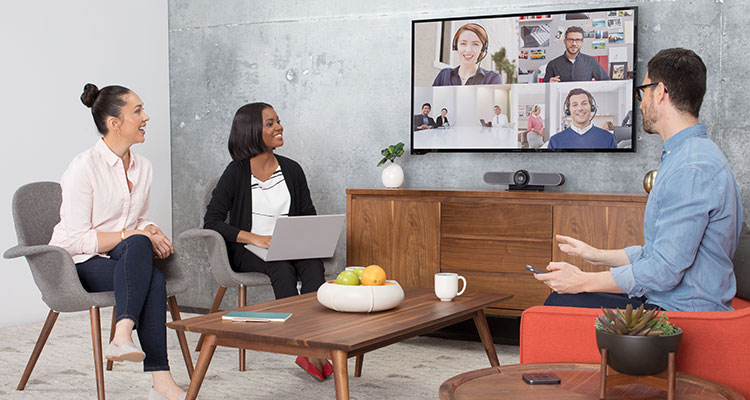Seven Best Practices for Huddle Room Collaboration
 Huddle spaces are the Goldilocks of meeting rooms: not so big and formal they stifle creativity, yet not too small for a team to get work done. And while they’re great at facilitating collaboration, it’s important to note that they’re not “just another meeting room” when it comes to implementing video conferencing.
Huddle spaces are the Goldilocks of meeting rooms: not so big and formal they stifle creativity, yet not too small for a team to get work done. And while they’re great at facilitating collaboration, it’s important to note that they’re not “just another meeting room” when it comes to implementing video conferencing.
These ad-hoc collaboration spaces have unique needs when it comes to AV technology and room design, but many organizations equip huddle spaces using a one-size-fits-all approach that creates a suboptimal experience for people in the room and at the far end. If you want to maximize productivity in your huddle rooms, check out these seven best practices for equipping small spaces for optimal collaboration
- Simplicity. If the collaboration technology is complicated, your employees won’t use it. Be sure to deploy audio/video devices that offer plug-and-play simplicity along with flexible wired and wireless content sharing options. Avoid creating a miniature version of the boardroom with complex, multi-button remote controls, too many items cluttering the necessarily small conference table or a tangled mass of cables under the table.
- Field of view. Your huddle room camera’s field of view (FOV) must match the physical characteristics of the space. Huddle rooms are often wider than they are deep, with tables pushed up against the wall to maximize seating clearance, so a standard 90-degree FOV camera won’t capture everyone in the room. Choose a wide angle 120-degree, high-quality camera to ensure that even those closest to the camera can be seen.
- Camera placement. Too often, cameras are placed above the display or on the table below it, creating an unnatural affect where people in the room never seem to make eye contact with the far end. Consider raising the display 6 inches to allow the camera to be mounted below the display, using VESA mounts, at approximate eye height for the people sitting around the table. Lastly, make sure your camera is placed so that it can capture people whether they are sitting around the table or standing at the back of the room — no headless torsos!
- Audio quality. While video offers tremendous benefits during collaboration, audio quality is most important. If you can’t hear one another, you can’t work effectively. Don’t settle for “good enough audio.” Instead, opt for a solution with high-quality audio elements designed for use in small spaces. Beamforming mics, echo cancellation and noise suppression will make a world of difference in the overall collaboration experience.
- Peripherals position. When it comes to collaboration, people are only part of the equation. Make sure the tools in your room are not only being leveraged, but are also visible to those at the far end. Peripherals such as whiteboards should be strategically placed so that the remote site gets a full view for productive collaboration.
- Room design. Just like you’re not supposed to wear plaid or stripes on camera, there are certain design considerations when outfitting the meeting room. Consider painting walls a color other than white — even a soft grey is a big improvement. You will be amazed how much more lively your huddle rooms will feel once you lose the stark white walls. Try to avoid visual clutter in the camera’s line of sight, especially anything tall in the center of the table or busy artwork on the rear wall.
- Room environment. Choose a space with minimal reflective surfaces and ensure there is good lighting for video calls. Good lighting means even lighting: Dark corners, too much backlight or direct sunlight coming in through windows can make it difficult to discern faces and expressions. Likewise, equip the room with noise-reducing carpeting and, if possible, acoustic wall coverings to provide optimal acoustics.
With these best practices, you can rest assured your huddle rooms are well optimized for collaboration.
This article was adapted from “Creating the Optimal Room Environment for Simple and Effective Meetings” ebook from Frost & Sullivan. To learn more about about creating the optimal room environment for simple and effective meetings, download our white paper here.




